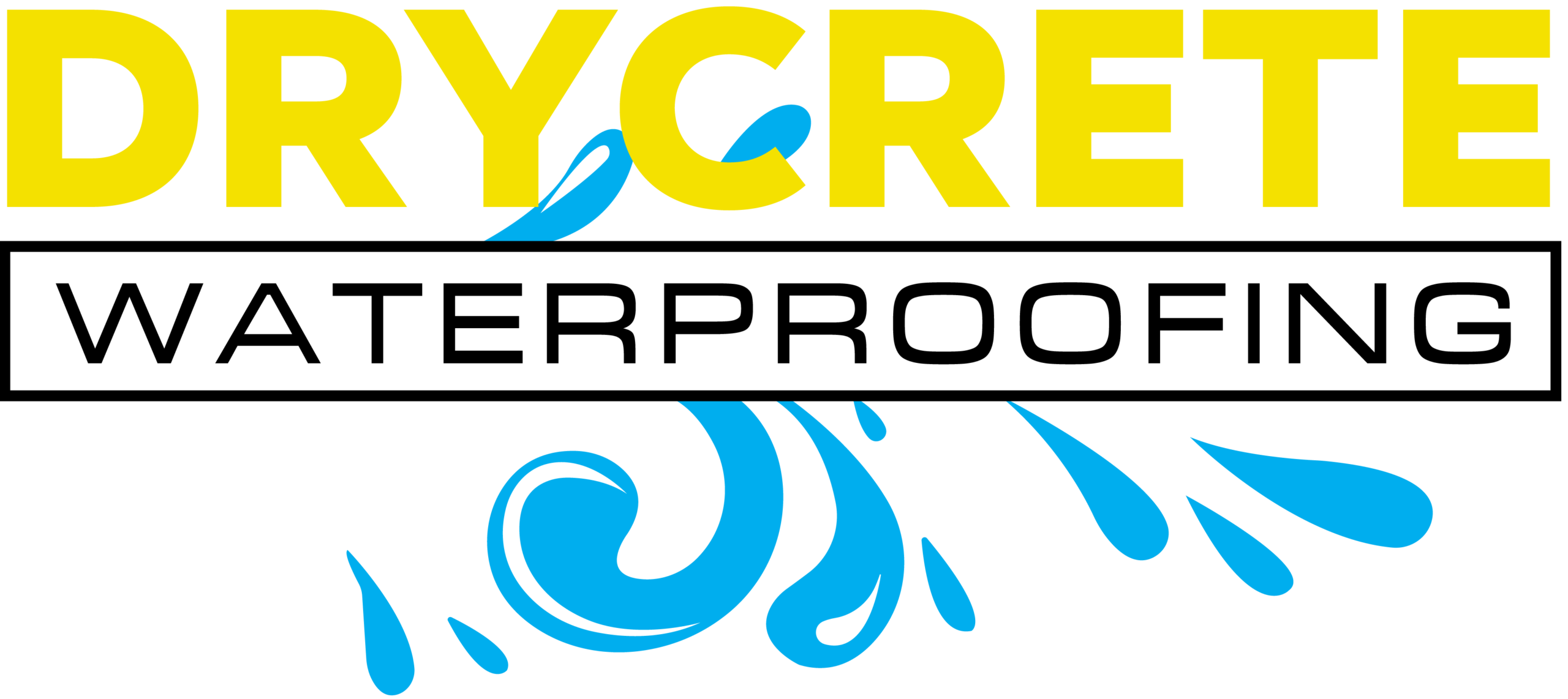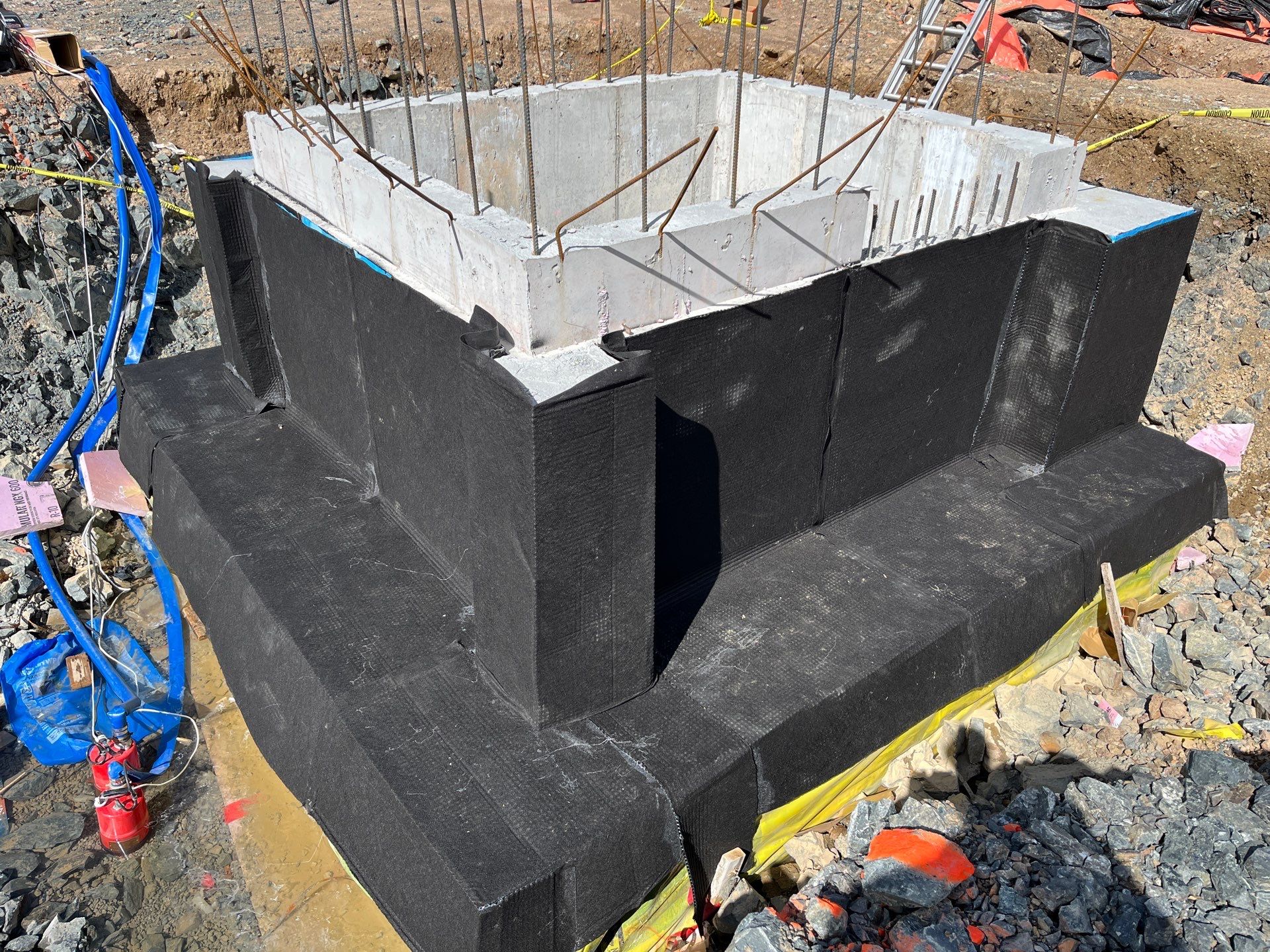Concrete is a bit of a wonder material; it’s light, moldable, versatile and strong- no wonder it’s been in use since the days of ancient Rome. There’s a raft of very good reasons that it’s the second most used substance (after water) in the world. It’s not without its drawbacks though- chief amongst them is that it’s susceptible to weather damage and losing its waterproof qualities over time. Luckily, if you’re wondering how to waterproof concrete, you do have a lot of options.
Understanding Concrete And The Need For Waterproofing
Concrete is a mixture of cement and aggregates like sand. The liquid cement bonds the grains and stones together into a substance that turns rock solid as it dries.
While the bound aggregates give concrete its strength, they also bring it’s major weakness- it’s fairly porous. Small pits and channels will exist between the grains and these present a few problems for keeping things watertight.
Eventually, water will find its way through.
Seepage And Cracks: How They Happen
As water finds its way into these tiny (sometimes nearly microscopic) cracks, it washes away some of the cement, widening the hole ever so slightly. Eventually, this will cause seepage and over time, this can cause large cracks or even structural failures.
Other problems may be less dramatic but water intrusion can lead to issues like mold and mildew, especially in basements. Not only will these make your basement an unpleasant space to spend time, it will also wreck your stuff and potentially damage your health.
The process is often sped up when the concrete is exposed to cycles of freeze and thaw. As water expands when it freezes, it pushes the cement out of the way, expanding the dents and channels it occupies and very quickly causing cracks.
What Can I Do To Prevent Leaks
In a word- waterproofing.
There are a variety of methods and which one is right for you will depend on a few factors. Whichever you opt for, proper waterproofing is the key to long-lasting concrete walls and floors.
Selecting The Right Waterproofing Material
There are a wide range of ways to waterproof concrete and which you opt for should be based on considerations like how exposed the surface is, where you’re applying it and, of course, cost.
The most common forms of waterproofing for concrete are:
Membrane Waterproofing
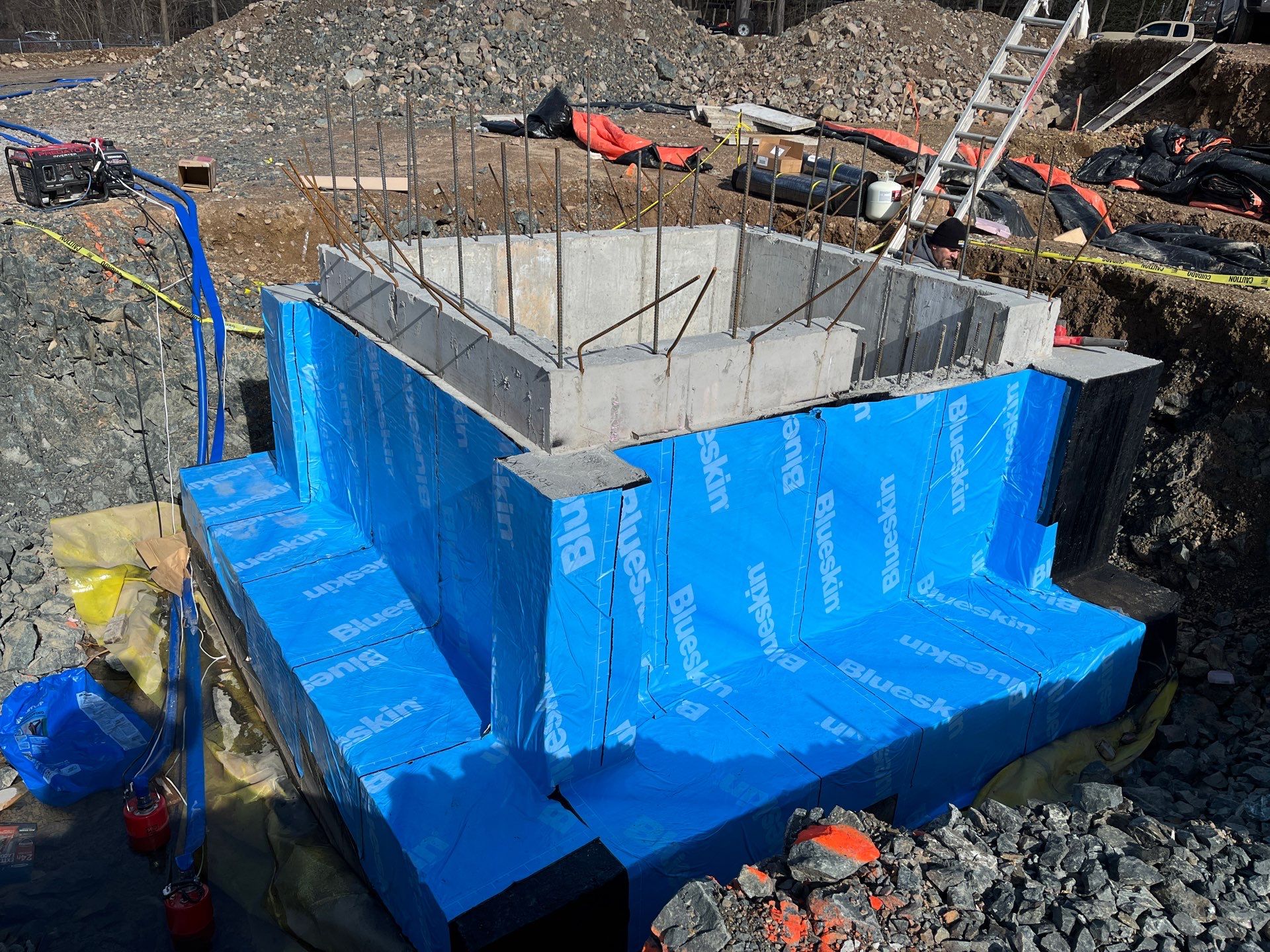
There are two types of membrane waterproofing- liquid and sheet. Within these two types are some which are suitable for application to walls and others which are intended for use on basement slab floors.
Cementitious Coatings
As the name suggests, cementitious coatings add a layer of a cement-like coating, filling cracks and gaps and blocking water ingress. The most commonly seen version you’ll likely know of is stucco, which has been in use for centuries.
Crystalline Waterproofing
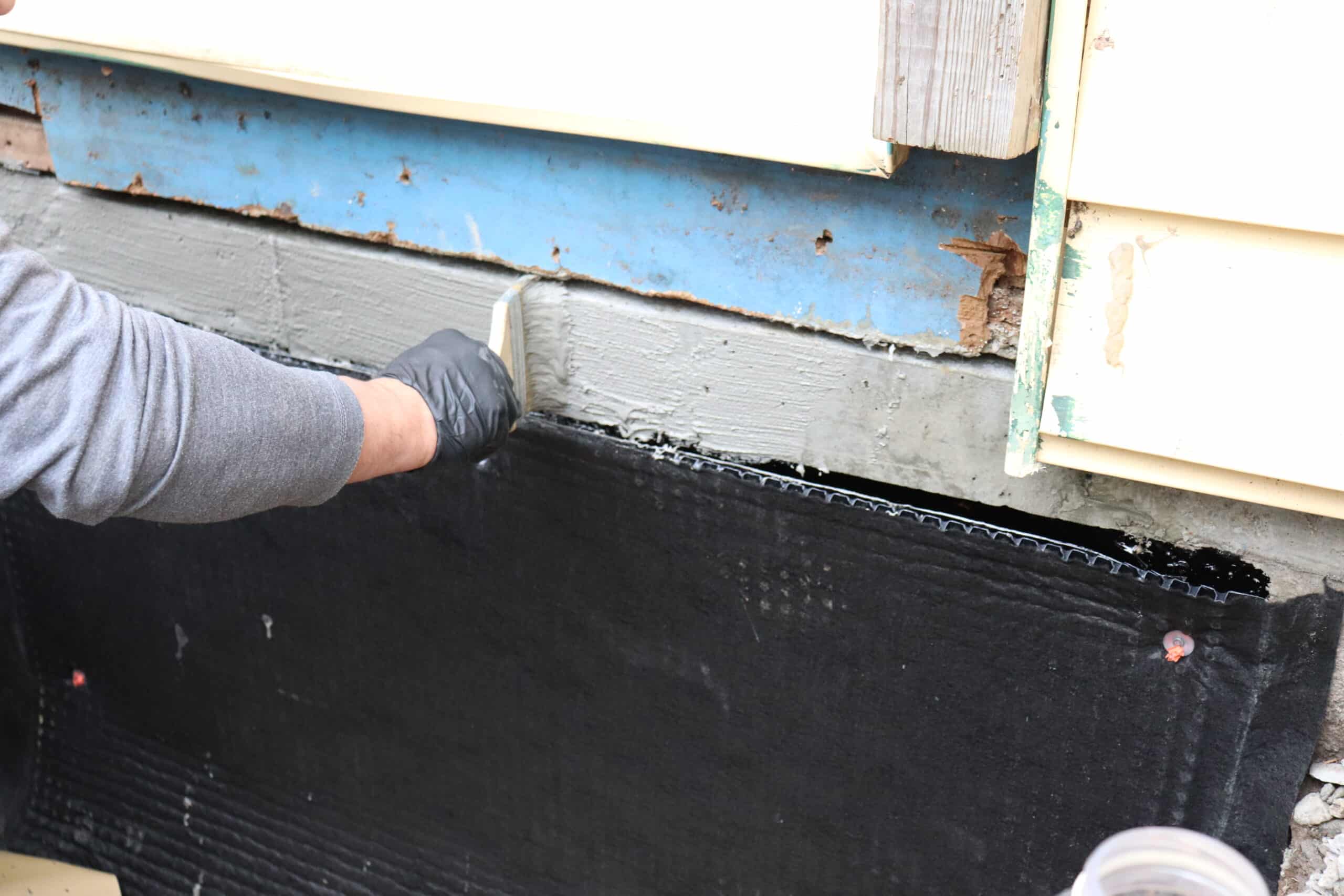
Like cementitious coatings, these are applied like a paint. Where they differ is in how they react with the concrete you’re waterproofing. A chemical reaction takes place as the solution is absorbed, creating crystals which physically block capillaries and small cracks.
Bituminous Coatings
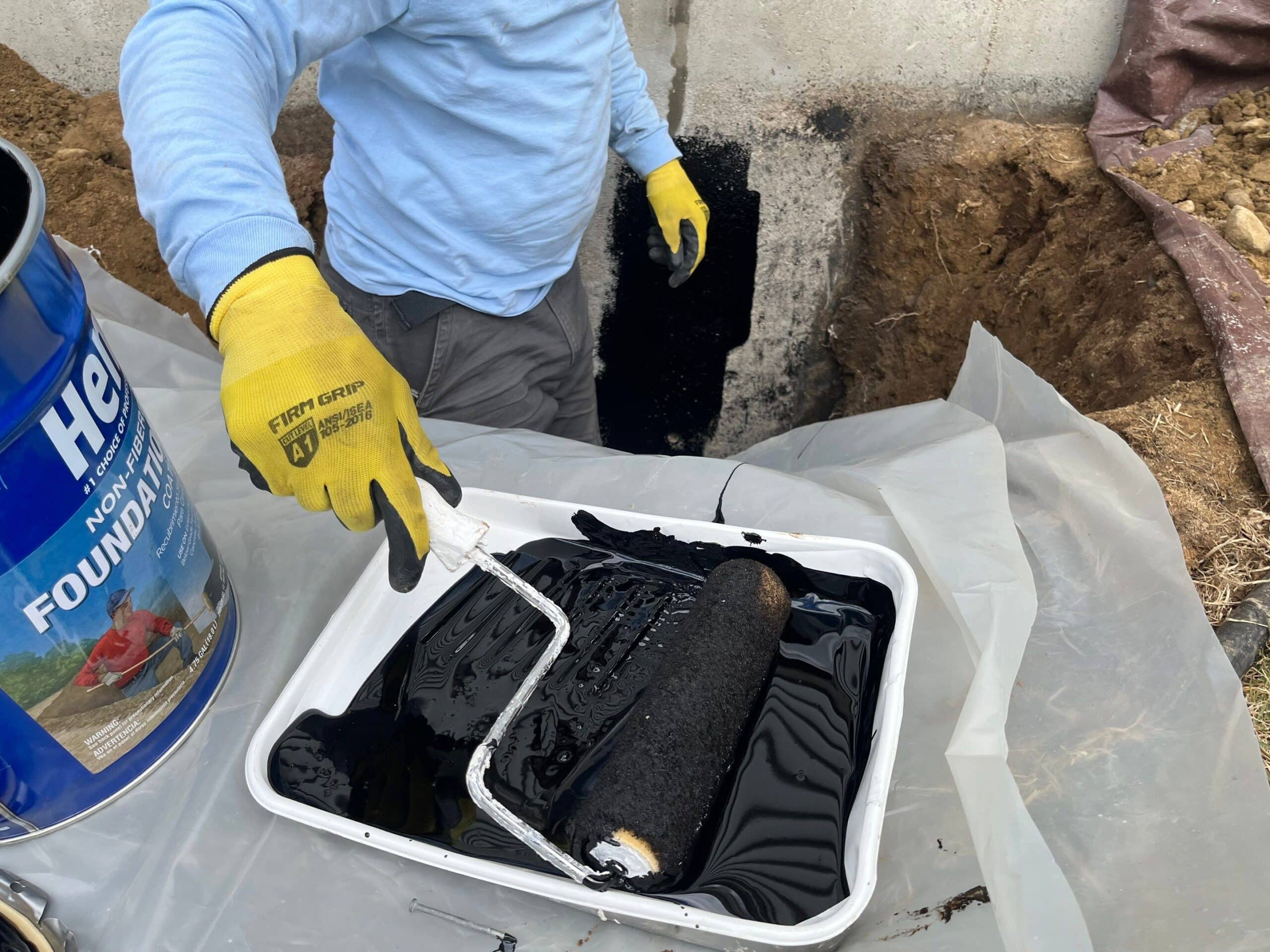
Bitumen is a tar which, when used to waterproof concrete, forms an impenetrable barrier to water. This effectively acts as a sealant for your concrete.
Epoxy and Resin Injections

If cracks have begun to form, injecting them with epoxy or resin based substances can help to “heal” them. Both will fill the space caused by water intrusion and create a strong bond with the surrounding concrete, effectively patching and sealing the cracks.
Integral Waterproofing
If you’re creating a new concrete structure and want it to be waterproof from the outset, integral waterproofing is probably the easiest and most effective way. These consist of various additives which can be introduced to your cement and aggregate mixture to ensure the concrete itself is waterproof on the structural level.
Application Methods For Waterproofing Concrete
Of course, deciding which method you’re going to choose to waterproof your cement is only half the battle- you also have to actually apply it.
How you go about this, which tools you’ll need and whether or not this is a DIY job will depend on which option you go for.
Membrane Waterproofing
Depending on which form of membrane you opt for, this will require different tools
Liquid
The most modern membrane materials are supplied as a liquid (also known as a tanking solution) which is spread out in a thin layer over the cement you’re trying to seal. You’ll need enough to cover the area and something to paint it on with.
You can undertake this as a DIY project, though it’s still a good idea to consult a pro if you have any doubts, especially around ventilation.
Sheet Membranes
Sheet membranes are a versatile waterproofing solution for concrete, applied through various methods tailored to the membrane type. Bituminous sheets are torch-applied, melting them onto the surface for a seamless barrier. Thermoplastic membranes (PVC, TPO) are heat-welded at seams, while EPDM rubber sheets are adhered or mechanically fastened. Self-adhesive membranes offer a straightforward peel-and-stick application, making them accessible for DIY projects.
Cementitious Coatings
To apply a cementitious coating, you’ll have to build it up in layers, leaving plenty of time for each to dry before applying the next.
Depending on which exact product you’re using you may need a brush, roller, trowel or spraying machine.
Again, this is something that a keen DIYer can do but it’s trickier than it looks if you want good results so it’s often a good idea to get a professional involved.
Crystalline Solutions
Applying crystalline solutions to water seal your concrete is a fairly straightforward process. Simply paint it on and allow it to be absorbed.
Bituminous Waterproofing
There are two forms of bitumen based waterproofing- paints and tar.
Paints
Bituminous paints are applied much like any other. Simply load up your brush or roller and get it on the walls.
This is fairly straightforward, so feel free to tackle it alone.
Tars
Slightly more old fashioned and a bit more heavy duty, applying tar to a surface involves keeping it hot enough to remain liquid and spreading it on before it can harden.
The fumes may be fairly toxic and the heat required makes this one to leave to the pros unless you’re really very confident.
Epoxy And Resin Injections
Depending on the crack you’re attempting to seal, how you go about using injection methods will change. No matter the size of the crack, to get a good waterproof seal in your cement, start at the bottom and work upwards.
For smaller cracks
Smaller cracks are actually trickier to apply epoxies and resins to. You will have to drill small holes to allow your injected substance access. Once you’ve drilled these, inject your application using the cartridge supplied.
This can be risky, so it’s one that’s best left to the experts.
For larger cracks
First ensure the crack is clear from debris and loose material by raking or blasting it out with compressed air, then starting at the bottom, work your way up, ensuring the crack is filled.
This can be done on a DIY basis but for better results, contact a pro.
Integral Waterproofing
The exact specifics of how you apply integral waterproofing will vary between products and concrete mixes but which ever you use, you’ll have to add it during the mixing process. Follow the instructions as closely as possible as changing ratios can have knock-on effects on everything from structural strength to curing times to coloration of the finished concrete.
Depending on how much concrete you’re making, you will need either a cement mixer or a large bucket and paddle mixer, a trowel or shovel for adding your components and another trowel for laying your concrete.
Whether or not this is a DIY task depends on exactly what you’re building. Laying a patio can be done as a (fairly advanced) personal project but if you’re planning on pouring basement walls, it’s probably best left to the pros.
Maintenance
However you waterproof your concrete, a good maintenance routine will pay dividends in ensuring that it continues to keep water out for years to come.
Keep a close eye on any waterproofing and for signs of water intrusion to make sure everything continues to work as it should. If you notice any signs of wear they should be rectified as soon as possible to avoid further damage and the risk of your efforts failing.
